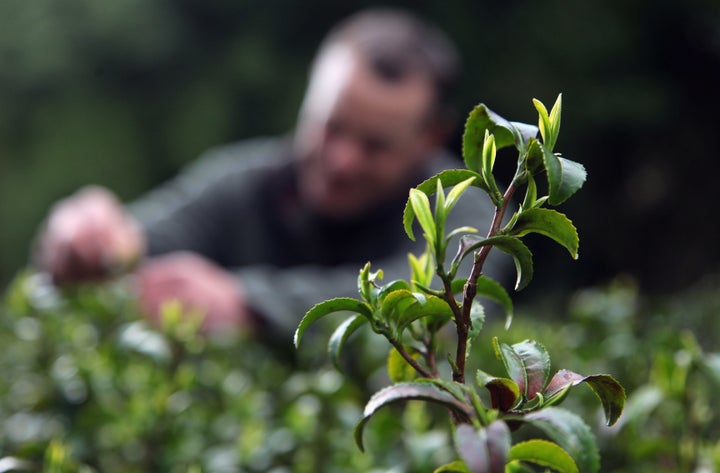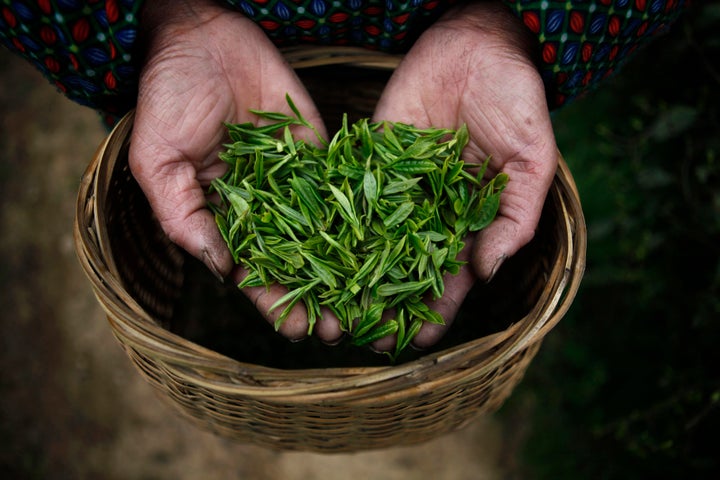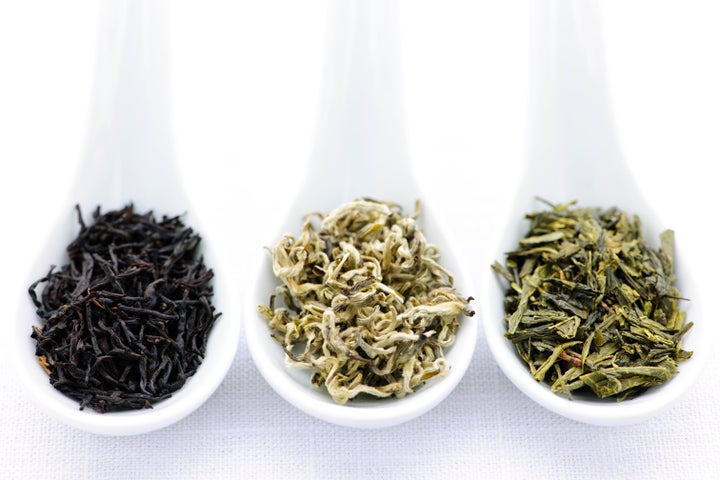
The market is loaded with tea options ― there are more versions of chai than we can drink ― but at the end of the day, most of them start from the same place: the camellia sinesis plant (pictured above).
That’s right, both green and black teas are made from the same plant despite their different look and taste. In fact, so too is oolong and white tea. It’s all about how when the leaves are picked and how they are processed that gives us the different teas we enjoy.

At one end of the spectrum is white tea. White tea is made with tea leaves before they are fully opened from the bud ― when they’re still covered in white hairs (that’s how white tea got its name). It is minimally processed and dried right after plucking to minimize oxidation.
To make green tea, young opened leaves and buds are cut from the plants. The leaves are left to wither ― which allows the water to evaporate ― and they are then steamed or pan-fired. This prevents the enzymes that are naturally found in the leaves from oxidizing. The leaves are then dried while maintaining their green color.

Black tea goes through a minimally different process, but one that produces significantly different results. First, freshly plucked leaves are withered, similar to green tea. They are then rolled to release the enzymes from the leaves. After rolling, the leaves are laid out to oxidize. This is what gives the leaves their characteristic black color. Only once sufficiently oxidized are the leaves dried (which stops further oxidation). The oxidation is what gives black tea its deep flavor.
Oolong tea falls somewhere between green and black in terms of processing. Made from leaves plucked at the same stage as the two aforementioned teas, oolong is withered and rolled before oxidization. Oolong is only partially oxidized ― how much varies according to the production style of the produce. It can vary between 8 to 80 percent.
Herbal “teas” are not made from the tea plant, and are not technically tea.
If you’re wondering, then, what the difference is between all the various types of black tea (or green, or white), take this example. Earl Grey tea is considered a black tea, and so is English Breakfast. But they’re both made from camellia sinensis ― Earl Grey just has the addition of bergamot oil, and English Breakfast is a blend of three other types of tea (which are all also made from camellia sinensis).
No matter which tea you fancy, at the end of the day it’s really all about oxidization. Just make sure you’re getting the most out of the one you do choose to drink.